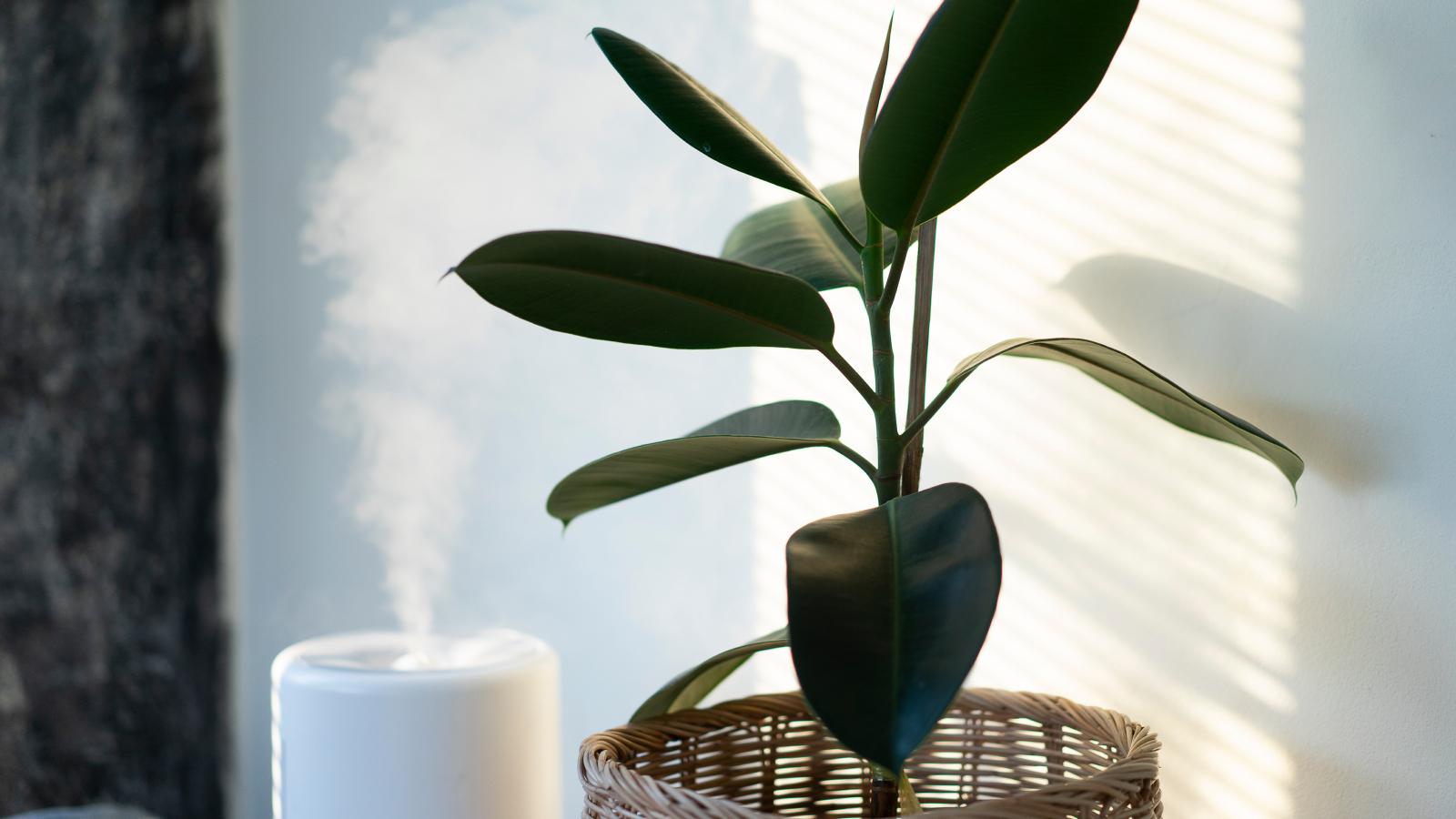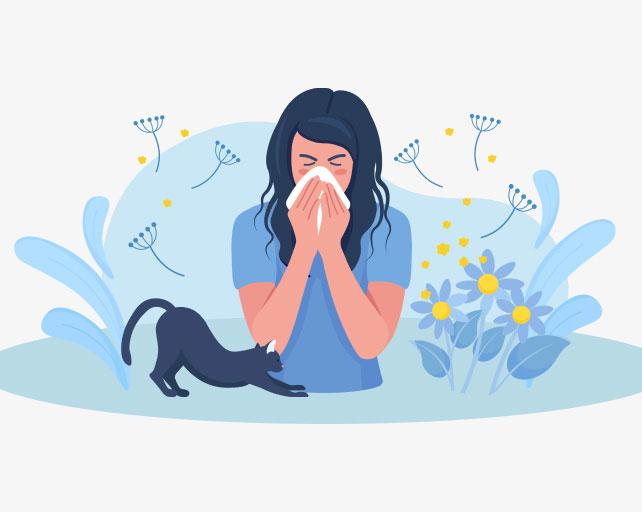Trane’s Best Humidifiers and Dehumidifiers for Home Comfort
Does your home feel sticky in the summer? Do doors and windows stick? Or do you get zapped with static electricity in the winter? These problems can be due to high or low humidity. Learn how to achieve ideal home humidity with Trane’s best humidifiers and dehumidifiers.
Humidity levels can creep up to an uncomfortable and harmful level in the summer, and they can fall to a shock-inducing level in the winter. So, how do you maintain a comfortable humidity level year-round?
We have some recommendations for you. But first, you need to know a little bit about the best indoor humidity levels.
Recommended Indoor Humidity Levels
What should indoor humidity be? While the best humidity level for your home is a subjective number, the best indoor humidity ranges between 30-50% according to the Environmental Protection Agency (EPA).
The best humidity level for the home in winter to keep your home warm and cozy is somewhere between 30% and 40%, In summer, between 40-50% should be comfortable.
If humidity levels fall or rise outside the 30-50% range, it can cause problems in your home.
High Humidity Problems
High humidity in your home can cause a multitude of problems, especially if it rises to 60% or higher. Issues can include:
- Clammy, sticky feeling
- Difficulty sleeping
- Asthma and allergy problems
- Musty odors
- Peeling paint
- Interior doors that stick
- Condensation on the walls and inside of windows
- Mold and mildew
- Wood rot
- Increase in dust mites
If the high humidity problem is only in a bathroom, you may be able to solve the problem by installing a new, more efficient exhaust fan. But when these high humidity problems affect the whole house, it’s time to find a whole-house solution.
Low Humidity Problems
If the humidity swings the other way, dropping below 30%, that can also cause problems. Issues can include:
- Dry eyes
- Dry skin
- Chapped lips
- Dry sinuses
- Nosebleeds
- Throat irritation
- Increased static electricity
- Drying, cracking wood
It’s important to note that many of the health symptoms listed can be caused by things other than dry air. If you or a family member feels ill, you should see a doctor. However, be prepared for the doctor to say you should use a humidifier to help alleviate some of these symptoms in the winter.
Dehumidifier vs Humidifier: Achieving Optimal Humidity Levels
In a nutshell, a dehumidifier removes moisture from the air and lowers the humidity. A humidifier adds moisture to the air and raises the humidity. For this article, we will talk about whole-house humidifiers and whole-home dehumidifiers.
Why Choose Trane Humidifiers and Dehumidifiers
Trane is committed to offering homeowners quality HVAC equipment that you can rely on for optimal home comfort. Our whole-house humidifiers and dehumidifiers are no exception.
These humidity control products utilize advanced technology and features to give you full control of the humidity levels in your home. In addition, the range of humidity control equipment is energy efficient and offers cost savings.
Our commitment to quality, reliability, and superior customer service has earned us the title of Most Trusted® HVAC Brand for the 10th year in a row.
Our Best Humidifiers
A whole-house humidifier provides humidity control for every room in your home, enhancing your comfort in the winter. Prepare to say goodbye to static electricity, drying wood, and other problems associated with low humidity.
All 3 types are connected to a water supply to draw in water as needed. When the thermostat sends a call for humidity, water is released into the humidifier. The humidifier operates until the desired humidity level is reached, and then shuts off.
Fan-Powered Humidifier
The fan-powered humidifier has an interior fan to facilitate the evaporation of water that is released to drip down the inside panel when the thermostat sends a call for humidity. Your furnace or air handler then blows the air throughout your home to help you get the right humidity level.
The main features include:
- Fan-powered
- Suitable for homes up to 4,200 sq. ft.
- Up to 18-gallon capacity
- Automatic control
- Works with all furnace models
- Eliminates the need for portable units
Steam Humidifier
Our steam humidifier is a great option to increase humidity levels and comfort in large homes or arid climates. The canister is filled with water and when humidity levels need a boost, the heating element inside heats the water to create steam, which is then distributed through your ductwork.
The main features include:
- Steam release
- Suitable for all home sizes, up to 5,000 sq. ft.
- 6 different capacities in one unit (11.5- 34.6 gallons)
- Operates independently of the heating system to provide optimal humidity at all times
- Works with existing ductwork or can be remotely mounted
Bypass Humidifiers
Our bypass humidifiers/bypass filters use the airflow from your furnace and a connected water supply to send evaporated water/moisture into your ductwork to circulate the air and increase the humidity level in your home.
The main features of Trane’s bypass units include:
- Suitable for homes up to 4,000 sq. ft.
- Up to 17 gallon capacity
- Automatic control
- Work with all furnace models
Our Best Dehumidifiers
Our whole-house dehumidifier comes in 3 sizes and capacities for homes 1,800-3,000 sq. ft. in size. Some of the features that make these the best dehumidifiers for a basement or your whole home include:
- Dedicated moisture control
- Fresh air ventilation options
- MERV 13 filtration
- High dehumidification performance at low energy cost
- Industry-leading warranty
- May be installed as a standalone unit or ducted into the HVAC system
- Compact design fits in closets, crawl spaces, basements, or attics
These dehumidifiers pair well with single-stage air conditioning units or high-performance homes with foam insulation. The humidifier draws moisture out of the air until the desired humidity level is reached, and then shuts off.
A note about a perennially humid basement - if you have evidence of water infiltration, you may want to consider a basement waterproofing consultation to get to the root cause of high humidity.
Benefits of a Humidifier-Dehumidifier Combo
Another option to help improve indoor air quality and achieve ideal indoor humidity levels is an energy recovery ventilator (ERV). This ventilator brings fresh air into your home year-round and can help provide humidity control whether your HVAC system is running or not.
It recovers heat and moisture from the outgoing air during cold weather to help humidify dry air. During hot, humid weather, it pre-cools and dehumidifies incoming air. This not only increases your comfort level, but it can help your HVAC system run more efficiently.
Tips for Proper Maintenance and Care
For whole-house dehumidifiers, humidifiers, and ventilators, maintenance involves changing or cleaning the filter or humidifier pad regularly. Depending on where the system is located, you can do the maintenance, or have an HVAC technician do it for you.
Any of these components is part of your HVAC system and you should schedule regular maintenance checks. An AC tuneup in the spring can include checking the dehumidifier, and a fall furnace tune-up visit can include checking the humidifier.
No Buckets or Basins to Empty
One of the best parts about a whole-house dehumidifier from a maintenance perspective is that there is no need to empty the bucket or water reservoir. If the dehumidifier is connected to your HVAC system, it can utilize drainage pipes installed by your HVAC company. If you use it as a standalone unit, it simply needs an adequate drainage line.
Visit our indoor air quality maintenance tips for information specific to individual Trane products. By keeping up with maintenance, you can keep your entire HVAC system operating at peak performance.
Choosing the Right Humidifier and Dehumidifier for Your Needs
The best way to choose the right whole-house humidifier or dehumidifier is to work with an experienced HVAC professional. It will be important to determine the size and capacity of the unit to achieve optimal humidity levels. A professional can also help you better understand the different types of humidifiers and dehumidifiers as well as their features and functionality.
Contact Your Local Trane Comfort Specialist
Are you tired of sticky or dry indoor humidity levels? Consider a whole-house dehumidifier or whole-house humidifier to help you achieve home humidity levels that leave everyone feeling comfortable. Whatever you need, your local Trane Comfort Specialist can help. Work with a trusted HVAC professional for all of your home comfort needs.
When you choose Trane for your HVAC and humidity control needs, you get energy-efficient, quality equipment backed by some of the best warranties in the industry.




